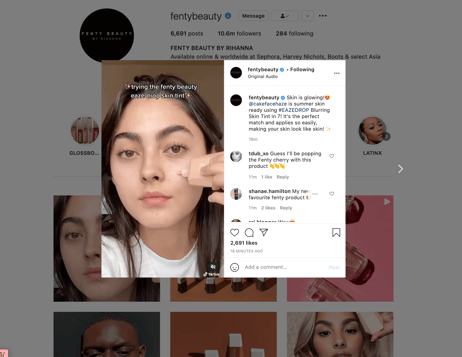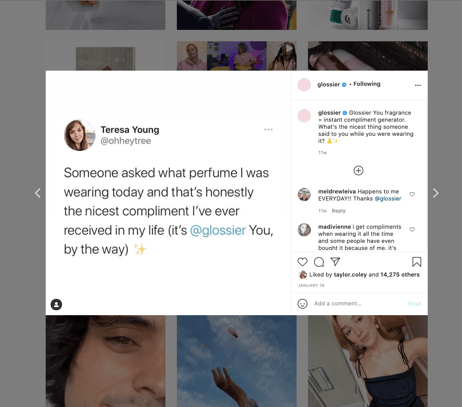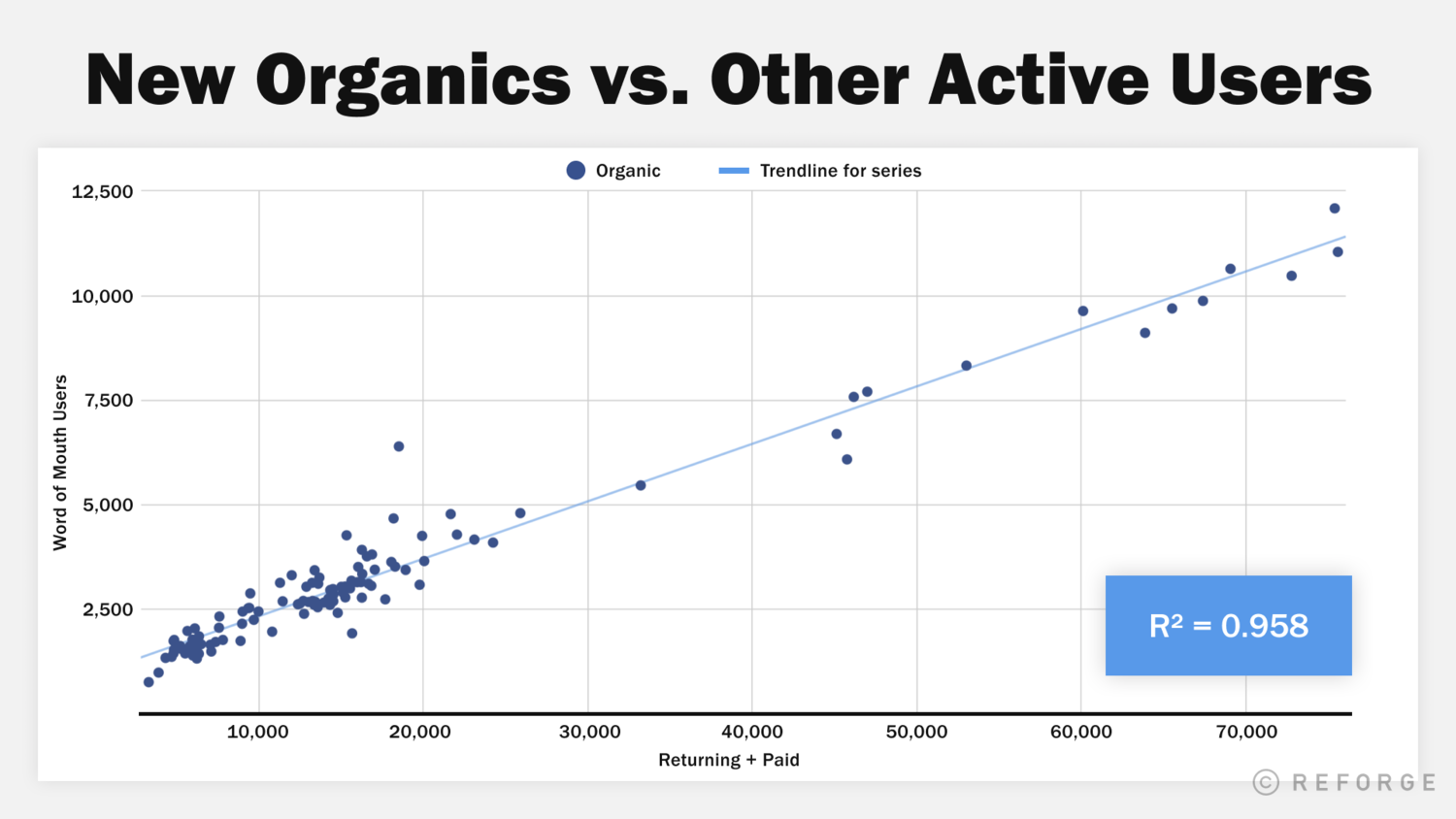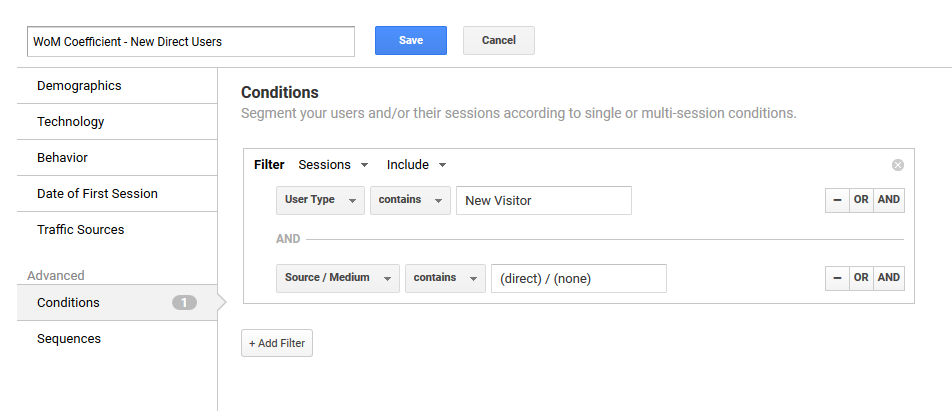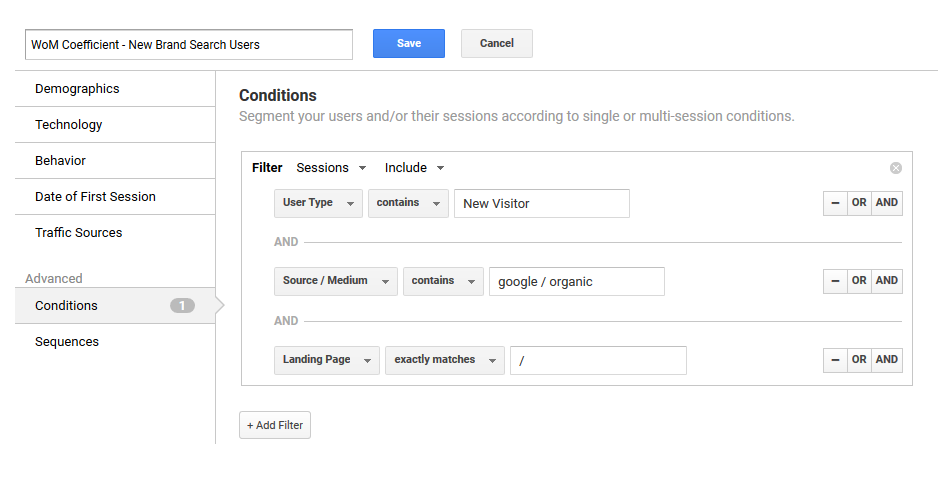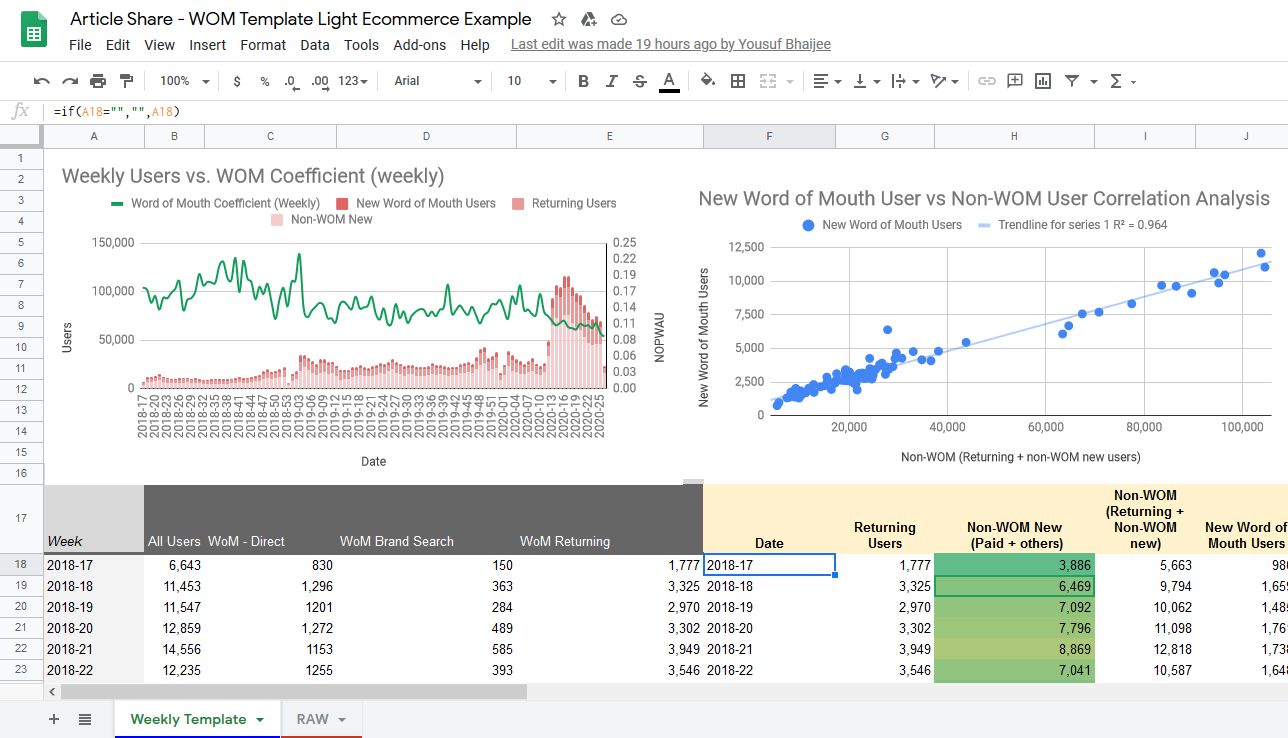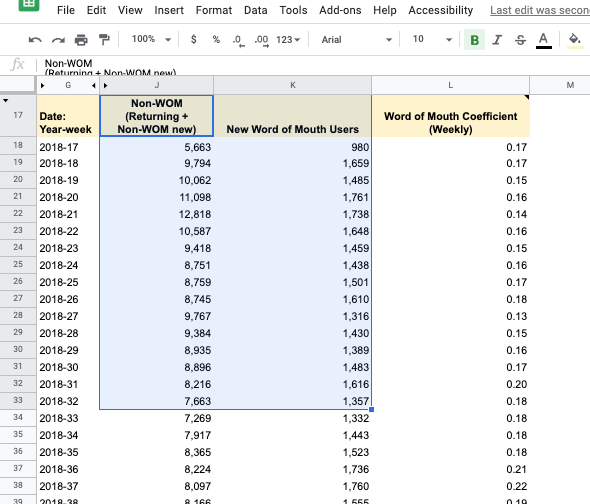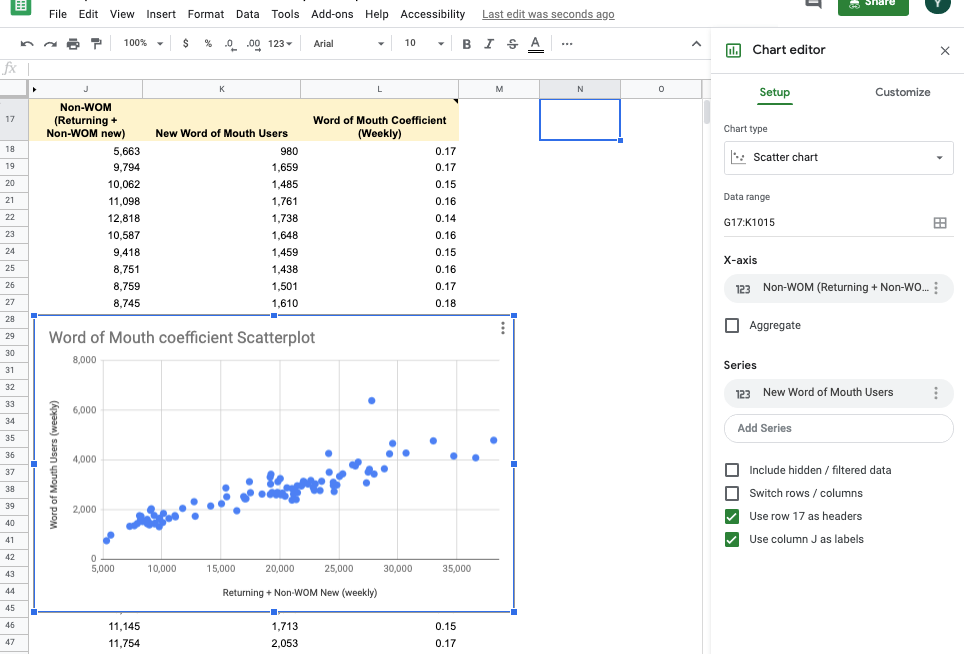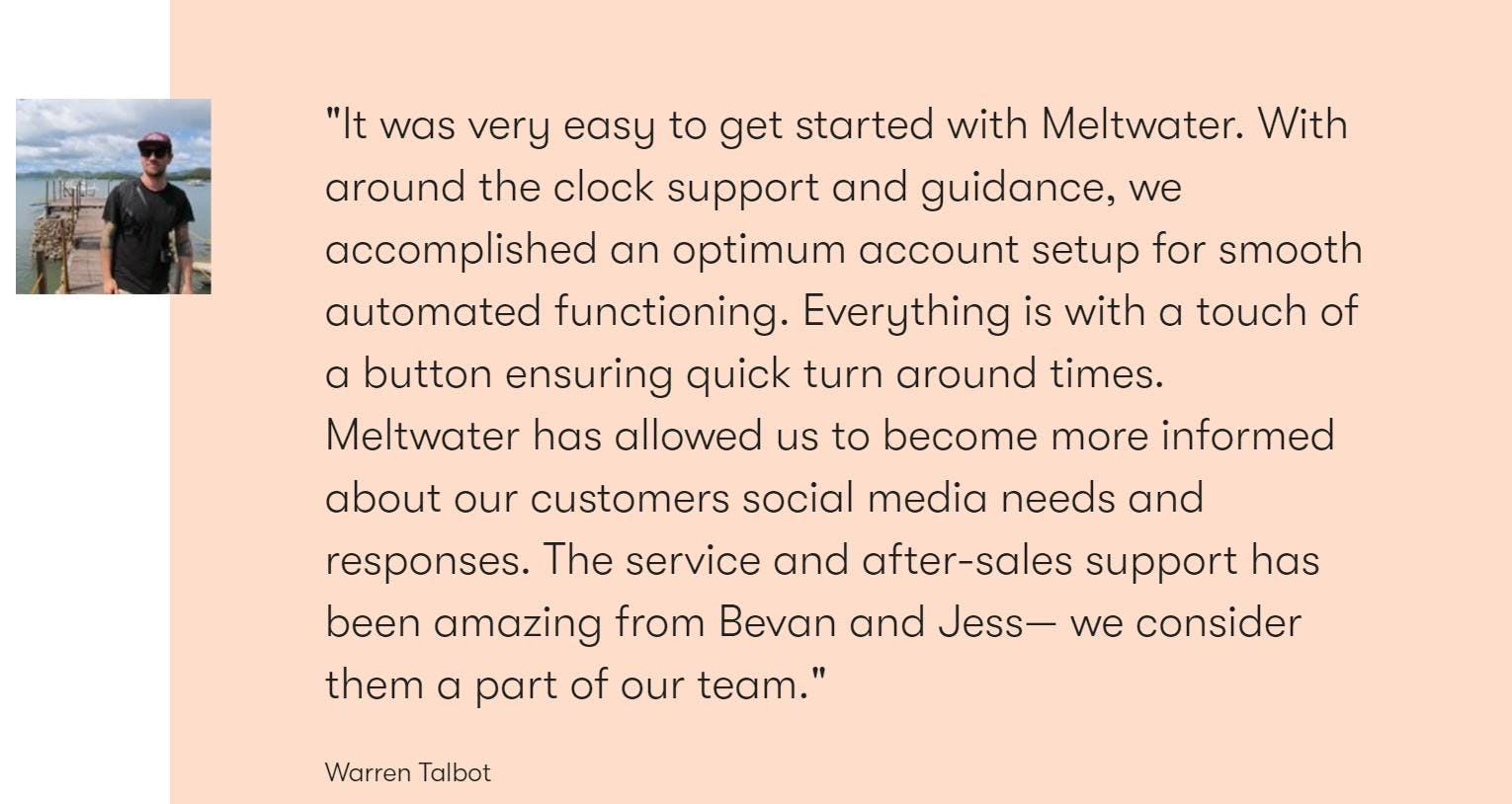Word-of-mouth recommendations are powerful, and generally hard to get. Use these tips to scale your word-of-mouth marketing strategy.
The impact of word-of-mouth marketing on sales is a valuable one. Ninety percent of consumers trust the recommendations of family and friends more than advertising. But, finding new, interesting and effective ways to get more people talking about their experiences with your brand, product or service can be a challenge. With the help of micro-influencers and user-generated content, your word-of-mouth marketing efforts can reach large, targeted audiences and scale more efficiently. Here we share some tips and ideas on how to scale your word-of-mouth marketing strategy.
1. Influencer Marketing
Social media is the ultimate platform for word-of-mouth marketing. By involving influencers in your word-of-mouth marketing strategy, you can tap into their targeted, highly engaged audiences. Even better, their content is known to drive sales. According to Instagram, 87% of people say influencers have convinced them to buy a product. Here are some tips on how to find influencers and work with them to get more word-of-mouth recommendations, and increase their reach:
- Find micro-influencers who are sharing content that relates to your brand and its niche by using a full-service influencer management agency, browsing hashtags or searching through your existing followers.
- Get influencers posting about your brand by sending them your best products and offering incentives, like coupon codes they can share with their followers.
- Encourage them to utilize your custom hashtag to increase engagement.
- Try out more than one platform. You may find influencers in your niche across more than one social channel, like Instagram and TikTok. Get influencers posting on each channel your audience frequents so more people see their word-of-mouth recommendations.
- Re-share some of the best influencer content to your brand’s social channels and website (assuming you have permission).
2. User-Generated Content
More than 86% of companies utilize user-generated content in their marketing strategies–and for good reason. Consumers prefer getting product information from other consumers as opposed to brands, with UGC earning 28% higher engagement than company posts.
There are many ways user-generated content can help you scale your word-of-mouth marketing strategy. For instance, you can incorporate user-generated content into your paid advertisements. Ads featuring user-generated content receive 4 times higher click-through rates and a 50% decrease in cost-per-click compared to ads without.
Encouraging users to share your content or their own pages is another great way to increase word-of-mouth marketing, and if they create their own content about your brand–even better. Here are ways you can encourage user-generated content:
- Run giveaway contests and hashtag campaigns on Instagram and TikTok to get more real users posting about your products/brand. Add incentives to increase participation and clearly state what actions are required in order to enter so the user-generated content will feature your brand, the products you’re promoting or any other key information. This is a great way to encourage UGC, boost brand awareness and increase engagement.
- Create a custom audio or filter on TikTok that other users can use in their content. TikTokers love using filters and sounds in their videos, so if you create ones that they like, they’ll be excited to use them in their own content. Pairing your custom audio or filter with a hashtag campaign, TikTok ad or influencer marketing campaign is the perfect cocktail to build hype around your sound/filter and encourage other TikTokers to create their own content using it.
Encourage more UGC by regramming/reposting content your followers have posted about your brand. Re-posting user-generated content shows your audience that you appreciate that they have taken the time to post about your brand and encourages potential customers to post about your product when they test it out, for a chance to be featured on your social media page. Fenty Beauty is an example of a brand who does this seamlessly on all of their social media platforms, from Pinterest to Instagram.
3. Encourage customers to leave reviews
Reviews are a powerful word-of-mouth marketing tool. Good or bad, they have a big impact on consumer purchase decisions. In fact, 94% of consumers said they’d be more likely to make a purchase from a business that had positive reviews. And with e-commerce shopping higher than ever, it’s important that you have online reviews. Here are some tips to grow your online reviews:
- Send the customer an email after they make a purchase with a link to review the product on your website.
- Offer users incentives like a discount code for after they leave a review.
- Use product gifting to encourage positive customer experiences that lead to reviews. For example, include a free sample product with your customer’s purchase to improve their experience and increase the chance of them leaving a positive review. You can also gift a new product to influencers and ask them to post reviews on their social media channels.
- Post screenshots of reviews on your social media pages and on the homepage of your website so consumers considering your product won’t have to search for them.
Creating positive word-of-mouth about your brand doesn’t have to be hard. With the help of these strategies, you’ll have influencers and everyday users posting about your brand for the world to see in no time. If you want to scale your word-of-mouth marketing campaign quickly, utilizing influencer content is the way to go!
Interested in adding micro-influencers to your word-of-mouth marketing strategy but have no idea where to begin? Let Statusphere do the work for you. Contact us to chat with one of our influencer marketing specialists about your goals and get started today!
From Wikibooks, open books for an open world
< Handbook of Management Scales
Jump to navigation
Jump to search
Contents
- 1 Word of mouth (AVE = 0.79; CR = 0.90)
- 1.1 Description
- 1.2 Items
- 1.3 Source
Word of mouth (AVE = 0.79; CR = 0.90)[edit | edit source]
Description[edit | edit source]
A previously used scale by Maxham & Netemeyer (2002) was adapted to measure word of mouth.
Items[edit | edit source]
- I’m likely to say good things about this company. (0.79)
- I would recommend this company to my friends and relatives. (0.79)
- If my friends were looking for a new company of this type, I would tell them to try this place. (0.87)
Source[edit | edit source]
- Walsh & Beatty (2007): Customer-based Corporate Reputation of a Service Firm: Scale Development and Validation. Journal of the Academy of Marketing Science, Vol. 35, No. 1, pp. 127-143.
Retrieved from «https://en.wikibooks.org/w/index.php?title=Handbook_of_Management_Scales/Word_of_mouth&oldid=4050122»
Category:
- Book:Handbook of Management Scales
How To Calculate Your Word of Mouth Coefficient
In our last post we introduced the metric of Word of Mouth Coefficient. There were a few critical points:
-
Word of Mouth is critical to growth as channel saturation, competition, and platform control are all increasing.
-
WOM is typically hard to measure.
-
Because it is hard to measure, it is therefore hard to influence.
As a result, we wanted to define a way to measure WOM that met three criteria:
-
It’s tied to active users — a user metric every company tracks
-
It’s a stable metric — you can use it to forecast confidently
-
It can be influenced — you can break it down to its inputs and influence it with product and marketing activities
The end result was the Word of Mouth Coefficient.
About the Authors
Yousuf Bhaijee
Yousuf was most recently VP of Growth at Eaze, and has held growth leadership roles at Disney, Zynga, CSC Generation, and ClassDojo. He is currently focused on how to drive word of mouth, analytics, and growth experimentation.
Michael Taylor
Michael was a Co-founder at Ladder, a 50-person growth marketing agency, leading the operations, data science and product teams. He is currently working on something new in the marketing attribution space.
Phil Carter
Phil is the Director of Growth @ Quizlet and a longtime mentor at Techstars in Boulder, CO. After stints in management consulting and venture capital, he was Director of Product at Ibotta and founded a company called Empath Labs that was acquired by InspiringApps.
Output 1: Correlation Analysis for the Word of Mouth Coefficient
There are two outputs for this step-by-step. The first is a correlation analysis.
One of the key assumptions for the WOM Coefficient is that active users are predictive of new word of mouth users. To test that assumption, we will do a simple correlation analysis. If the R^2 is high (close to 1) then we know that we can use the metric to forecast goals that are realistic. If it is low, then we know that we need to do some additional refinement (which we’ll talk about later).
Output 2: Word of Mouth Coefficient Over Time
The second chart that we want to produce is looking at the WOM Coefficient over time. This will help us start to identify changes in the coefficient and understand what impacts it at a high level. It may help us identify things like:
-
Changes in the WOM Coefficient with seasonality.
-
Changes in the WOM Coefficient as we make changes in other channels like paid acquisition.
-
Changes in the WOM Coefficient with product releases.
Calculating the Word of Mouth Coefficient Light To Heavy
As with most analyses, there are multiple ways to to get to the WOM coefficient, each with their pros and cons. For the WOM Coefficient, there are three primary methods:
-
Light Version — Using Google Analytics with some basic filters/segments.
-
Medium Version — Refining the definitions of Returning Users and New WOM Users using qualifying actions.
-
Heavy Version — Using Econometrics and multivariate regression analyses.
So how do you know which one to use? This primarily comes down to how complicated your marketing channel mix is. The more complicated your marketing channel mix, the more noisy your analysis can get, and as a result you need to use a heavier analysis in order to refine it to something predictable.
In general, as companies grow, their customer acquisition journey often gets more complicated. They start with using 1-2 major marketing tactics (e.g. Facebook advertising) and can scale up to 10+ channels or tactics.
Some examples:
-
Series A company: Figuring out 1-2 main digital marketing channels (e.g. Facebook ads, Adwords) and scaling
-
Series B company: Advertising on 3-6 large channels. Paid and unpaid marketing
-
Series C+ company: Introduce Out Of Home advertising (e.g. billboards, TV, etc.). Can reach $10M+ per month in ad spend, as well as brand marketing, etc.
-
Large single channel outliers: Large companies that rely on single channels or product-driven growth. Examples: Pinterest, Dropbox
In this post we will focus on series A/B startups and large single channel outlier products by doing walkthroughs of the light and medium versions of the analysis. Any company can and should start with the light version, though.
It’ll tell you where you stand in terms of how ‘noisy’ your data is, and maybe give you interesting findings right away. Later in this post, we’ll ramp up the sophistication and flag scenarios where more advanced analysis might be needed.
How to Find Your Word of Mouth Coefficient — Light Version
Measuring word of mouth doesn’t have to be complex — for many businesses you can replicate our findings in 10 minutes with Google Analytics. Note that if you aren’t using Google Analytics you can do something similar in Mixpanel, Amplitude or your analytics tool of choice.
We’ll walk through 3 steps to get the word of mouth data:
-
Define The Denominator — Returning Users
-
Define The Numerator — Direct + Brand Search
-
Run The Analysis
We’ll then walk through an additional 3 steps to validate your WOM Coefficient:
-
Highlight The Data You Need
-
Create A Scatter Plot
-
Add Trend Line and Analyze R^2
To get started in Google Analytics you want to click into the Acquisition > All Traffic > Source/Medium report — we’ve found that to be the quickest, most useful page to export.
Step 1: Define The Denominator — Returning Users
For simplicity, we’re going to rely on Google Analytics’ definition of ‘Returning Users’, which is cookie-based, relying on a unique identifier storage on a New User’s first visit. If you have GA installed on multiple domains, you’ll need to aggregate data across all.
Our driving hypothesis in the light version is that repeat interactions with your brand drive referral behavior – every time someone visits your website, or uses your app, is a chance for them to decide to refer you.
In practice, you might want to only count users who have completed some action, like signing up or purchasing, which we’ll cover later in this post. However, you may be surprised how predictive this simplistic approach of using GA’s definition of ‘Returning Users’ often is.
To segment your data for Returning Users, go to the Segments section and click on + Add Segment to the right of the default ‘All Users’ segment (or click this link to import).
Click save, and you have the first part, the denominator, for your Word of Mouth Coefficient calculation! This might seem too simple, and for some businesses it will be, but bear with us and you’ll be surprised at how far this gets you.
Step 2: Define The Numerator — Direct & Brand Search
To get the other half of the WOM Coefficient equation, we need an approximation of ‘word of mouth’ traffic. In Google Analytics we can simply choose ‘direct’ traffic, which is traffic without a marketing source, primarily consisting of sharing on ‘dark social’.
To do so, we click to create another segment, this time filtering for Source / Medium containing “(direct) / (none)” (start typing and it should auto-complete) and only New Users (click this link to import).
Even though we’re trying to keep it simple in this Light version, we know that direct traffic isn’t the whole picture — much of what we’d define as ‘word of mouth’ results in people searching for your brand name and clicking on the organic search result.
But how do we separate ‘brand’ searches from general organic search traffic? Google has made it difficult, by removing the ability to filter by search term, but a good proxy is to filter for organic search traffic to the homepage. If they searched on Google and landed on your homepage, it’s a pretty safe bet they came in from your brand term.
To replicate, first filter for New Visitors, who came from Google / Organic, who landed on “/”, or the homepage (or you can import by clicking this link).
In this case we used ‘exactly matches’ just to make sure we don’t accidentally match to any other pages (given that homepage is denoted by just a forward slash). If you’re also running paid search ads on your brand term, then you’ll want to consider filtering for these too as an additional column for word of mouth (though you’ll have to adapt our template).
Of course the exact definitions might differ depending on your brand term and how you have your search campaigns set up (also remember Bing or other search engines!). For this analysis to work best, we want to explicitly separate out any marketing we’re doing intentionally, because by definition that’s not ‘word of mouth’.
If you’re doing offline advertising like billboards or TV, it’ll tend to show up as branded search and direct traffic. Unfortunately that gets us into advanced territory, where we’d need methods like Econometrics to properly separate out the impact. If that’s you, reach out to us for support and we’ll help point you in the right direction. However for now let’s continue with the ‘light’ version of the analysis – for which we’ve now got all the data we need.
If you struggled with creating the segments, clicking these links will import them to your GA.
-
Returning Users
-
New Direct Users
-
New Brand Search Users
Step 3: Run The Analysis — Filling In The Template
Now all we need to do is export the data, preferably with at least a year’s data (or as much as you have). You can find the export function on the top right just above where you chose the date range. Make sure you have the ‘All Users’ segment selected as well as the 3 new segments you made. Choose Google Sheets and make a copy of the WOM Coefficient Light Template so you can follow along.
Scroll down in the Google Sheet you exported to below the normal Source / Medium output — you’ll be ignoring that part. What you want is the daily breakdown by segment at the bottom. You have the Day Index (date), Date Range (not useful), Segment (your definitions for the different parts of the calculation) and Users (the important part!).
You just need to quickly transform this data into the right format by building a pivot table. Select the data (apart from the three total rows at the bottom) and go to Data > Pivot Table. Create it in a new sheet. Then put Day Index in the Rows section, put Segment in Columns and then Users in Values to get the data the way you need it. Totals rows aren’t needed so you can deselect them on the right hand side pivot builder.
From here you can simply copy and paste values (Paste Special > Values only, or CMD + SHIFT + V on a Mac, CTRL + SHIFT + V on Windows) across the different columns into the template. For example, day index goes in column A ‘Date’, and it should fill up to column D ‘Users’. The template should now be filled out completely, with all the calculations done for you based on the data you entered.
The completed template will automatically plot your WoM Coefficient for you, and do the correlation analysis for word of mouth vs returning. Note: if you have more rows than in the template, you’ll need to drag all formulas down, as well as change the range of the pivot table. You’ll have the raw data to manipulate, but will also see the functions we used to identify anomalies.
From this sheet, you should see whether the `light` version was predictive for your business. Look for a relatively stable green line (Word of Mouth Coefficient) on the chart on the left, and a high R^2 value for the trendline on the right chart (the blue dots should be mostly along the line).
If that’s what you’re seeing, then great, this simple analysis should be enough to interpret your word of mouth coefficient. If returning users is predictive of new word of mouth users, that means the best thing you can do for word of mouth is to drive repeat visitors. If the Word of Mouth Coefficient is trending up or down, then you can forecast where that leaves you versus your growth goals. Finally, if you’re seeing spikes or dips in word of mouth coefficient, those are anomalies you should investigate – what happened at those times that could explain it?
How to Validate Your Word of Mouth Coefficient
In this section we will show you how to validate the Word of Mouth Coefficient using a simple regression analysis in Google Sheets. We do this to make sure Returning and Non-WOM users predict the Word of Mouth driven users. This is reconstructing the template we shared with you from first principles. This will be a useful exercise for more advanced analysis and companies with a more sophisticated marketing mix, because you’ll learn how to build a custom model that works for your business.
The steps below will walk you through how to create a scatterplot and calculate R^2 in Google sheets for WOM Coefficient.
Step 1 — Highlight The The Data You Need
Step 2 — Create A Scatter Chart
-
Select ‘Scatter Chart’ as the chart type
-
Pick ‘Non-WOM (Returning + Non-WOM New)’ as the x-axis
-
Pick New-Word of Mouth users as the Y-axis
Step 3 — Add Trends Line And Calculate The R^2
-
Navigate to the ‘customize’ tab
-
Open up ‘Series’
-
Select “Add Trendline”
-
Scroll down further and select “Show R^2”
And that’s it. You can now analyze how well your data predicts new WOM users. An R^2 > 0.7 is considered highly predictive. Less than 0.7 requires more work and exploration – this means you’ll need to use the medium or heavy analysis to find better definitions for returning and new word of mouth users.
Calculating Word of Mouth Coefficient — Medium Version
As mentioned, sometimes the light version produces data that is not very predictive. This typically stems from a too simplistic definition of our numerator and/or denominator. This will show up as a low R^2 because you are including users who are not likely to generate Word of Mouth, mixed in with the users who are more likely to refer. To refine our analysis, we can think about how to define Returning Users or New Users more narrowly using qualifying actions. This link is a template for the medium analysis.
Refining Who Is Considered A Returning User
Let’s explore a few examples:
-
Visiting www.bananarepublic.com without buying anything — If a returning user goes to a store without buying anything, are they likely to generate word of mouth? And if not, should they be included as an active user? For many internet businesses, the default definition of daily active user (DAU) is someone who loads the website. Since there are many more users that visit and do not buy than those who visit and do buy, the non-buying visitors will dilute the Word of Mouth impact of the buyers. In this scenario, a more valuable definition of active user is someone who makes a purchase
-
Visiting www.tiffany.com without buying anything — For other products (even in the same category) the bar could be lower. Jewelry is a great example. You might go into a store with no desire to buy and find a sale on a limited edition collection of rose gold rings. Even if you do not have the means to buy it, you might want to tell your friends about it! In this case, even window shoppers could generate word of mouth.
-
Visiting https://theathletic.co.uk/ and hitting a paywall — Because you need to subscribe before being able to access content, the standard definition of a User as having visited the website, would likely perform horribly to predict word of mouth. Instead we’d want to filter for only Returning Users who have an active subscription, in order to improve the accuracy of our models.
Other ways to filter your active user definition could be combinations. Continuing the jewelry example you could define an active user as someone who has done at least one of multiple qualifying actions:
-
Added to cart
-
Added to wishlist
The point is to look at additional definitions thinking about your specific product and consumer and then validate by measuring each definition’s R^2.
Refining Who Is Considered A New User
The definition for new users matters just as much as the definition for returning users. We found this to be the case in Edtech, when we partnered with a $1B+ company and found very different results based on how we defined active users.
For this company, which generally supports a weekly use case, the qualifying actions a user can take to be considered active include:
-
Starting a study session
-
Signing up for an account
We then came up with three specific definitions for “New WOM users” to explore. We did this to evaluate which was the most predictive — or had the highest R^2. Here are the definitions, from least restrictive to most restrictive:
-
Definition #1: New WOM Actives — All users who performed at least one of the qualifying actions (studying or signing up) for the first time during a specific week.
-
Definition #2: New WOM First-Time Visitors — Same as Definition #1, but with a technical exclusion that removed logged-out visitors who were actually just returning users. More technically: the definition for “New WOM First-Time Visitors” was all distinct new users who performed at least one of the qualifying actions (studying or signing up) for the first time during a specific week based on cookie ID, rather than a user ID (or lack of user ID). This exclusion removed potential noise from returning logged-out visitors
-
Definition #3: New WOM Sign Ups — All users who signed up during a specific week.
All WOM definitions: For all three of these definitions, only users traced to ‘direct’, ‘branded search’, ‘social sharing’, or ‘social’ acquisition were counted as WOM new users.
The company pulled data for each of these different definitions for New Active Users through Organic WOM, and inserted it into this data template, focusing on Weekly Active Users (WAU) to reflect the fact that their product generally supports a weekly use case. We then ran the same analysis as the light version separately for each definition.
This yielded the following results:
Insights from this:
-
New WOM Sign Ups had the lowest R^2 (i.e. least predictive power). This makes sense because the product has a lot of usage from logged-out visitors who perform the qualifying action of starting a study session but don’t immediately sign up. Given that, New WOM Sign Ups is an overly restrictive definition of New WAUs from Organic WOM, because it excludes users who actively visited and used the product without signing up during that visit.
-
The best definition did not have the highest R^2. The ‘New WOM Actives’ definition had the highest R^2, but for reasons that are not necessarily positive. Specifically, this definition included some logged-out users who were actually returning users from prior periods — which we determined by examining their browser cookies. As a result, some of the same users were in both the numerator (New WAUs from Organic WOM) and the denominator (Returning WAUs). This artificially inflated the number of New WAUs from Organic WOM (since some of them weren’t actually new), and artificially inflated the definition’s R^2.
Ultimately, the company selected Definition #2: New WOM First-Time Visitors. This definition exhibited an acceptably high R^2 value while also making the most conceptual sense, in that it captured all new users who performed any of the qualifying actions necessary for the user to be considered “active” while excluding returning logged-out users with the same cookie. This is a perfect example of why it’s important to use both quantitative and qualitative criteria in determining which metric definitions to use for this analysis.
To be thorough, we also did this exercise again using “daily” and “monthly” as the active user definition but found that weekly was the most meaningful.
When Light/Medium Word of Mouth Coefficient Isn’t Enough
As a more mature business with higher marketing spend, multiple product lines or offline marketing channels, you might find neither the Light or Medium versions work as is. This is because as your business’ complexity increases, there’s more ‘noise’ in the data and additional variables need to be accounted for.
Scenarios where this exists may include:
-
Complex marketing mixes with multiple overlapping channels
-
Businesses that run offline campaigns likely to drive word of mouth
-
Multi-national companies with varying brand awareness by country
-
Companies with multiple product lines or business models
-
Exogenous shocks on word of mouth (global pandemic, competitor behaviour)
For example, companies running less directly trackable marketing campaigns (TV, billboards, podcast ads, content, PR) require techniques to tease out how much ‘direct’ traffic was really attributable to those campaigns.
In scenarios like this, one method that has proven useful for us is Econometrics. This is essentially expanding the analysis to use multivariate regression. The template you used was single variable linear regression, and it’s possible even in GSheets to run multivariate regression (using the LINEST) function.
Typically used by large advertisers to predict sales (and therefore attribute performance to specific marketing channels), you can make new word of mouth users the dependent variable and regress against variables other than returning users that might drive word of mouth. Examples include flagging time periods when PR campaigns were running, separating out the impact of COVID-19 or incorporating product stock levels, pricing and availability.
Practically the work involves measuring more variables (not just performance but actions taken on campaigns), enriching and cleaning the data in creative ways, and then trying various models until you find a way to improve accuracy. Let the R^2 metric guide you, though the true test of the model will be how it performs in predicting future levels of word of mouth.
Start Simple
It’s likely that you’ll find measuring word of mouth difficult, particularly as your business scales in complexity. We recommend you start with the simplistic ‘light’ model we demonstrated earlier in this post as a good first step. You might find it surprisingly predictive, and can start to take actions to increase Word of Mouth. However if you find yourself dealing with noisy data, struggling to find good definitions for Returning and Word of Mouth Users, or don’t know where to start with Econometrics, feel free to reach out to us (Yousuf and Michael) for support.
Have you heard the term «teleconferenced peer influence groups»? If not, you’re not alone. You probably know it by its more common moniker: “word-of-mouth marketing” (WOMM).
The term “Teleconferenced peer influence groups” was originally coined by psychologist George Silverman in the 1970s, after using focus groups to discuss different pharmaceutical products.
His observations indicate the basic tenets behind how word of mouth works: «One or two physicians who were having good experiences with a drug would sway an entire group of skeptics. They would even sway a dissatisfied group of ex-prescribers who had had negative experiences!” (Source: thefreelibrary)
Now, 50 years later, this approach has grown into a widely used marketing tactic — with the data to prove it: 74% of consumers identify word of mouth as a critical part of their purchasing decision. And a whopping 92% of consumers say they trust recommendations from friends.
So what’s the word on word-of-mouth marketing? Read on to find out.
Table of Contents
-
What is Word-of-Mouth Marketing?
-
Why is Word-of-Mouth Marketing Important?
-
Types of Word-of-Mouth Marketing
-
Why is Face-to-Face marketing effective?
-
What are Some Word-of-Mouth Marketing Strategies?
-
What are Benefits of a Word-of-Mouth Marketing Strategy?
What is Word-of-Mouth Marketing?
Word of mouth (WOM) is one of the oldest and most effective forms of marketing. And, it has evolved relatively seamlessly into the digital landscape. At its core, it can be defined as:
A marketing method that relies on casual social interactions to promote a product.
Word-of-mouth marketing involves businesses finding ways to encourage individuals to share recommendations, news, and accolades about their brand, products, and services.
For example, when was the last time you had an interaction with a brand, positive or negative, and then told someone else about it? Think about a time when the food and service at a new restaurant you tried were so good and unique, you had to tell your friend to go try. Or, maybe it’s a software tool that has greatly improved your team’s workflow, so you left a review on G2 or recommend it to a peer.
All of these consumer interactions build trust and increase the front-of-mind real estate presence for your business in the ever-crowded ether of messaging bombardment people receive these days. (Of course, it should be noted that WOM can also hurt you based on the sentiment of the discussion).
Why is Word-of-Mouth Marketing Important?
Word-of-mouth marketing is about a face-to-face interaction (or avatar to avatar as the case may be in today’s digital age) that is built on pre-founded trust. It’s a cost-effective way to spread the word about your company and products among online and in-person communities.
If it’s not already top of mind for your marketing, it should be! Word-of-mouth marketing is cost-effective, builds brand loyalty, and reveals new ways you can reach potential customers.
Types of Word-of-Mouth Marketing
Referrals from word of mouth can come from several sources, but for marketing purposes, the most important channels to know about include:
- Peer-to-peer
- Face-to-face
- User-generated content
- Social media conversations
1. Peer-to-Peer
- A friend says to a friend “I just had the best meal at a restaurant downtown. I think you’d love it!”
This is arguably the most basic form of word-of-mouth marketing. When you get a recommendation from a peer that you respect and trust, you’re far more likely to check out the recommended product, restaurant, etc., yourself. For marketers, this type of interaction is tough to really measure accurately or influence directly.
Tip: To improve your reporting, ask new customers how they found out about you. If they say “I heard about you from my friend” you can ask them to expand on what specifically their friend liked. These learnings will help you invest time and energy confidently into brand-building marketing and acquisition efforts.
2. Face-to-face marketing
- A sales rep is set up at a kiosk in the grocery store and offers you a sample of their new line of cheeses. Mmm cheese….
Face-to-face marketing is usually set up as a more “professional” relationship between the recommender and recommendee. It has a more clear sales factor, but it’s still a 1:1 tactic.
Why is Face-to-Face marketing effective?
Think of a software product demonstration to a new prospective client, or free samples at a grocery store. In both cases, you may not purchase that day, but you’ve had a face-to-face interaction with someone who is passionate about what they’re selling. They had the opportunity to tell you about their brand, and offer a business card. So they’ve had that extra touchpoint to remain memorable when it comes time to make your purchase decision.
Face-to-face marketing tips: Let your personality shine, and incorporate brand values into your selling story. Today’s consumers gravitate heavily towards authenticity and shared values (such as eco-friendliness and inclusivity). Highlighting these during your product pitch will help you stay top of mind.
3. UGC (User-generated content)
- You go to the restaurant your friend suggested and liked it so much you hit the Big 3 of UGC: posted a picture of your meal to Facebook, added a video to your Instagram Story (tagging the restaurant), and wrote a 5-star review on Yelp.
UGC (User-generated content) is what marketers like to refer to as “low hanging fruit” — once it’s created that is. And, brands can use this content in their own content marketing strategy to (1) show off an unbiased testimonial and to (2) build an even stronger relationship with the customer who posted. Much like peer to peer recommendations, this content can reach a larger audience that the poster may or may not know directly.
If you can figure out how to cultivate user-generated content, you’ve unlocked one of the quickest and cheapest ways to grow your online presence.
Tip: Respond to both positive and negative online reviews. Be honest, appreciative, and genuine, and more people will want to publicly share their experiences!
There are components of social media in all of the above marketing options, but it’s so important it deserves its own call-out. Social posts on any platform that mention your brand are powerful instances of social proof.
To put some numbers to the value of WOM on social media: over half of purchases inspired by social media sharing occur within 1 week of sharing or favoriting, and 80% of purchases resulting from social media shares occur within 3 weeks of sharing. [Source: VisionCritical]
It’s important to think of social media in a broad context here: consider everything, from the major channels like Twitter, LinkedIn, and Instagram to the new and exciting like TikTok, to forum-based platforms like Trip Advisor.
Tip: Engage when you’re tagged! Consumers love when brands respond so encourage your social media manager to like, share, and comment when posts tag you or use an official brand hashtag.
What are Some Word-of-Mouth Marketing Strategies?
- Create a Conversation
- Use Influencers & Brand Ambassadors
- Encourage UGC
- Social Media Listening
WOMM is ultimately quite ubiquitous, which is what makes it so incredibly valuable — but it’s also what makes it incredibly difficult to control.
How do you measure success? How do you implement a strategy for improving and increasing your face to face recommendations? How do you swiftly find and address negative reviews or comments and protect your carefully crafted reputation? Let’s explore how to implement these tactics into your marketing strategy.
1. Create a Conversation
Word-of-mouth marketing is about real people sharing their thoughts about your brand and products, thereby indirectly encouraging more sales and recommendations for you — like a ripple effect.
But how do you keep the conversation going? Chatter matters so you need to help generate that buzz!
Find out where conversations are happening
This comes from understanding your audience. Where do they hang out? Jump in on forum discussions around related topics to your industry, products, and services. Facebook groups are another great place to start.
Be sure to adhere strictly to any forum guidelines in place (which often include no advertising). Otherwise, your words will be swiftly removed by moderators.
Appeal to Your Audience
You can’t market unless you understand who you are talking to, right? And in today’s ever more complicated world, the psychosomatics of your customer base go far behind the demographics data.
Tip: Gather the data from previous campaigns, email sends, and social interaction to analyze what type of content your audience reacts positively to, such as discounts, contests, or polls.
Maintain your online reputation
If you start seeing a lot of negative word-of-mouth buzz, you’ll want to address it swiftly and professionally. Don’t let it fester. Not only does this go a long way toward solving the issue, but it also leaves a very positive impression for current and potential customers.
So, rather than recording their frustrating conversation trying to cancel their internet service and posting it for millions of people to share in their misery, you instead have someone posting “I just had a surprisingly pleasant customer service experience with XYZ. I’d highly recommend them!” If someone was thinking of switching, this could be what helps convince them.
Having a comprehensive crisis communication strategy is essential for any marketing team. But especially important when you’re prioritizing your WOMM efforts. To get help monitoring and responding to these types of situations, get a free tour of our real-time alerting tool.
2. Encourage UGC
The Drum found that 75% of people feel user-generated content makes a brand more authentic.
So how can businesses encourage people to create content? Here are some tips:
- Create a brand hashtag to invite participation
- Jump on a trending topic and apply it to your brand
- Run a contest — you can always offer incentives here too
- Ask for feedback so you can hear straight from customers what they want
Customer reviews are a great tactic and should absolutely be part of your word-of-mouth marketing strategy.
70% of people trust consumer reviews online according to HubSpot. That’s actually huge if you think about it. Thousands of strangers are trusting what thousands of other strangers say about a product online.
Accolades can be featured on your website, social platforms, in campaigns, or 3rd party sites. They can be written statements, quotes, video interviews, or a comprehensive story in a blog article.
Here’s an example of a quote from a Meltwater customer that we may choose to share on our homepage or in other key customer journey locations because we think it accurately represents our solution and who we are:
If you haven’t invested in 3rd party review platforms, here are some popular ones to get started:
- G2
- Yelp
- GlassDoor
- Reviews.io
Do note that you need to ask permission to re-share anything.
3. Utilize Influencers and Brand Ambassadors
An influencer or brand ambassador is an individual with a significant following who works with brands to promote products and services. As of 2021, the three biggest social platforms for influencer marketing are Instagram, Facebook, and YouTube. (Source: Business Insider)
Influencers are powerful in that they are another trusted source for consumers, but unlike a 1:1 connection, they are speaking as a “friend” to a much larger audience. And the best part is, the ROI is far more trackable if you’re working with them in an official partnership capacity.
Tip: Bigger isn’t necessarily better when it comes to follower count. Ask prospective influencer partners about their engagement metrics to get a sense of how active their audience is.
Example: If you are vegan and struggling to find everyday recipes or are seeking a community where you can connect with other like-minded vegans, you may follow someone like Michelle Cehn a micro-influencer and founder of World of Vegan.
Influencer marketing is deserving of its own blog post altogether, and we just happen to have one, but here are some of the main points to consider:
There are roughly 4 different levels:
- Nano: 500-1K followers
- Micro: 1K-100K followers
- Macro: 100K — 1M followers
- Power / Celebrity: 1M +
Questions to keep in mind:
- Do they fit our brand image?
- Have they worked with your competition?
- Who is their audience?
- Does this make sense for our budget?
Lastly, take a step back and really listen.
Look at how people are talking about your industry and pay particular attention to their pain points. This will help you both drive social conversations and implement solutions based on what people are talking about in your space.
This will also help you track the type of content your audience enjoys (photos, videos, Instagram Stories, etc.,). These all provide clues to help you maximize return on building an engaged following that will continue to spread the word to their friends.
Gain valuable audience insights with Meltwaters social listening tools. Don’t forget the invaluable information you can glean from tracking your competitors as well! Request a demo to learn more.
What are Benefits of a Word-of-Mouth Marketing Strategy?
To wrap it up, let’s review the main benefits of using word of mouth as an integral component of your marketing:
1. Low Cost
Because you’re not paying for true word of mouth, this type of marketing strategy contributes to lower costs, as others are doing most of the work for you. It helps influence sales with little to no advertising spend.
2. Builds Trust, Brand Reputation & Loyalty
Developing trust is not only one of the first steps in a relationship marketing strategy, but it’s also one of the most difficult.
Since word-of-mouth recommendations are coming from a peer that you trust, a familiar face, or online reviews, they are inherently trustworthy — especially in comparison to a brand simply shouting into the void about how great they are.
3. Creates Long-term Value
Gaining consistent, positive buzz around your products through word-of-mouth marketing will help you maintain repeat customers and make it easier to approach influencers for brand advocacy partnerships.
Referrals like this are invaluable to grow your loyal customer base, ensuring the snowball keeps rolling — as a study from the Wharton School of Business found: customers referred by people they know and trust are between 16% to 24% more loyal to that brand on average.
Discover What EveryoneSocial Can Do👇
Efficiently accelerate growth across your company by enabling employees to share and create content on social media.
Marketing might be busy going after traditional outlets like paid search and organic traffic, but a powerful strategy that can’t be ignored is word-of-mouth marketing.
Think about all the times a friend, family member, or co-worker recommended a product or service to you and how that may have influenced your buying decision or perception of a brand.
It happens more often than you may realize.
That’s why businesses must focus on word-of-mouth and more marketing teams must prioritize how to influence this channel.
We compiled a list of 30+ word-of-mouth marketing statistics to help you better grasp the influence it can have on both your brand and revenue.
What Is Word-of-Mouth Marketing?
Word-of-mouth marketing (WOM) is when people gain interest in your brand, product, or services through their peers’ influence. This can occur in person or online, but it’s essentially free marketing by those who’ve had great experiences with your company.
People trust information and recommendations from their friends, family, and co-workers, which you’ll see in the data below. And when your company provides a top-notch experience, customers will speak positively about your brand.
The challenge for many markets or executive leaders is that word-of-mouth marketing isn’t always easy to measure directly.
It’s technically part of the “dark funnel” where people are influenced by word-of-mouth first. They then come to your site directly or through another measurable medium. However, their first touchpoint was actually through a friend or colleague.
Now, let’s get into the word-of-mouth stats you need to know.
30+ Powerful Word-of-Mouth Statistics
Since there are plenty of statistics around word-of-mouth, we wanted to break this up into more digestible sections.
Below, you’ll clearly see the importance of word-of-mouth marketing within your company’s marketing strategy.
General Word-of-Mouth Statistics
Let’s start with some general word-of-mouth marketing stats that’ll set the foundation for the value of this channel.
- 90% of people trust suggestions from family and friends. [HubSpot]
- 70% of people trust consumer reviews online. [HubSpot]
- 72% of people get news from friends and family, making word-of-mouth the most popular channel for sharing. [Pew Research Center]
- 68% of people trust online opinions from other consumers, which places online opinions as the third most trusted source of product information. [Nielsen]
- 88% of people trust online reviews written by other consumers as much as they trust recommendations from personal contacts. [BrightLocal]
- Consumers discuss specific brands casually 90x per week. [HubSpot]
- On social media, 58% of consumers share their positive experiences with a company, and ask family, colleagues, and friends for their opinions about brands. [SDL]
- Brands that inspire a higher emotional intensity receive 3x as much word-of-mouth as less emotionally connected brands. The same academic study also found that highly differentiated brands earn more positive word-of-mouth. [Journal of Marketing Research]
- 64% of Word of Mouth Marketing Association survey respondents mostly or completely agree that word-of-mouth marketing is more effective than traditional marketing. [WOMMA]
- 50% of marketers have incorporated word-of-mouth marketing into their traditional marketing campaigns. [WOMMA]
- Recommendations are one of the top five influences on brand decisions before consumers go shopping. [Nielsen]
- Millennials are 115% more influenced by word-of-mouth than traditional advertising. [Chatter Matters]
- 83% of consumers say they either completely or somewhat trust word-of-mouth recommendations from family, colleagues, and friends about products and services, making these recommendations the highest-ranked source for trustworthiness. [Nielsen]
- 92% of global consumers trust UGC and WOM more than advertising. [Jay Baer]
- Marketers rated the quality of a word-of-mouth lead to be 4.28 on the 5 point scale. [Referral Rock]
- 85% of small businesses agree that word-of-mouth recommendations brought them the most consumers. [Writers Block]
Word-of-Mouth Statistics: Impact
Wondering what kind of impact word-of-mouth marketing actually has on your business? Here are some stats that demonstrate the true power of this strategy.
- 91% of B2B buyers are influenced by word-of-mouth when making buying decisions. [USM]
- 74% of consumers identify word-of-mouth as a key influence in purchasing decisions. [Ogilvy Cannes]
- 56% of B2B purchasers look to offline word-of-mouth as a source of information and advice. This number jumps to 88% when online word-of-mouth sources are included. [BaseOne]
- Word-of-mouth improves marketing effectiveness by up to 54%. [MarketShare]
- When specific case studies were analyzed, researchers found a 10% increase in word-of-mouth (both online and offline) translated into a sales lift between 0.2 – 1.5%. [MarketShare/ Keller Fay Group]
- 84% of consumers report always or sometimes taking action based on personal recommendations. [Nielsen]
- 70% of consumers report always or sometimes taking action based on online consumer opinions. [Nielsen]
- 43% of social media users report buying a product after sharing or favoriting it on Facebook, Twitter, or Pinterest. [VisionCritical]
- 49% of people say they rely on recommendations from influencers when making purchasing decisions. [Twitter]
- More than half of purchases inspired by social media sharing occur within a week of sharing or favoriting, while 80% of purchases resulting from social media shares occur within 3 weeks of sharing. [VisionCritical]
- 71% of people are more likely to make a purchase when referred to by social media. [HubSpot]
- Millennials ranked word-of-mouth as the #1 influencer in their purchasing decisions about clothes, packaged goods, big-ticket items (like travel and electronics), and financial products. Baby Boomers also ranked word-of-mouth as being most influential in their purchasing decisions about big-ticket items and financial products. [Radius Global]
- 81% of people say they’re influenced by what their friends share on social media. [Market Force]
- 77% of brand conversations on social media are people looking for advice, information, or help. [Mention]
- 85% of website visitors find visual user-generated content more influential than brand photos or videos. [AdWeek]
- 70% of marketers plan to increase their online WOMM spend, and 29% will increase their offline word-of-mouth marketing spend. [WOMMA]
- 82% of brands use word-of-mouth marketing to increase their brand awareness, but 43% expect word-of-mouth marketing to improve their direct sales. [WOMMA]
- Friend referrals make consumers four times more likely to make the purchasing move. [referral marketing statistics]
Final Thoughts
As you can see from these word-of-mouth marketing statistics, word-of-mouth is a powerful form of marketing.
Here are some quick tips to help you improve your word of mouth marketing:
- Chat with your top customers and nurture them.
- Ask how you can ensure the BEST experience for every customer.
- Gather online reviews and respond to both the positive and negative ones.
- Start an employee advocacy program to motivate employees to create and share on the company’s behalf
- Create a customer advocacy program to reward and further educate customers.
- Be active on social media to drive awareness, engage in customer conversations, and share content from employees and customers.
- Provide value in everything you do and educate your audience. When you solve customers’ problems and entertain them, trust in your brand grows and more people will talk positively about it.

.jpeg?width=841&name=How%20to%20Scale%20your%20Word%20of%20Mouth%20Marketing%20Strategy%20(1).jpeg)
